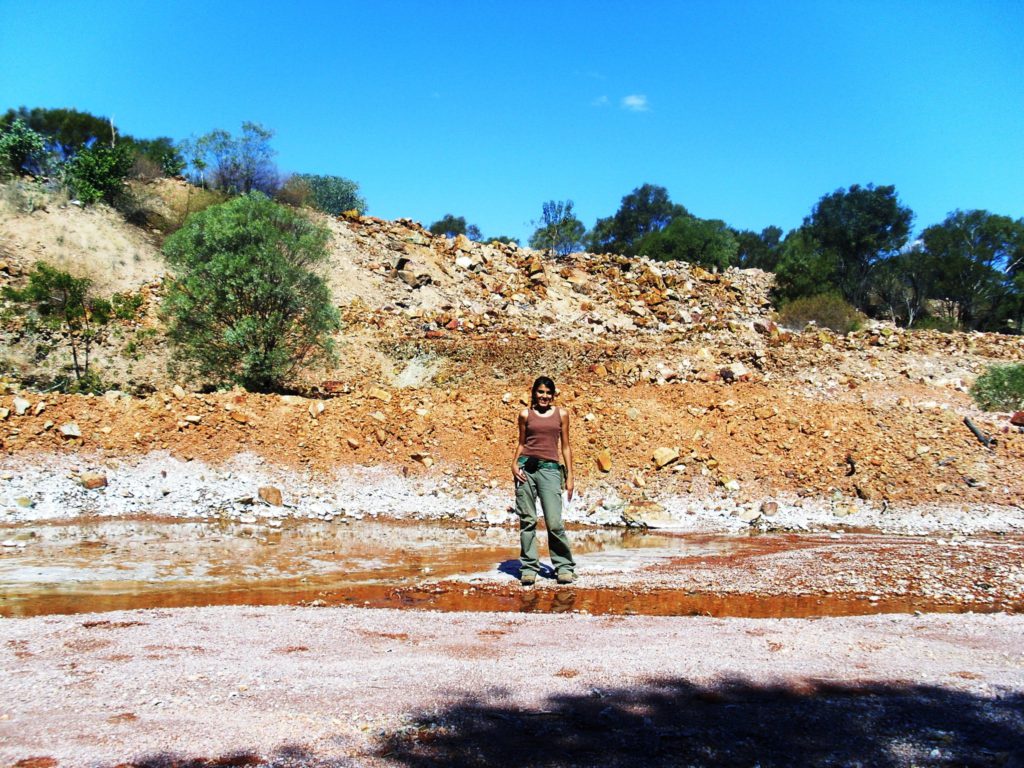Many of today’s mining industry leaders have been involved with Amira Global projects. This week we have a Q&A with Dr Anita Parbhakar-Fox, Senior Research Fellow at the WH Bryan Mining and Geology Research Centre, Sustainable Minerals Institute, The University of Queensland, Brisbane.
Which Amira Global project/s did you work on?
I worked on the P843/P843A GeM (Geometallurgical Mapping and Mine Modelling (GeMIII)) projects. The projects were collaboratively run by The University of Queensland and University of Tasmania (with CSIRO also a research partner) and multiple industry and METS partners including BHP, Newcrest, Teck and AngloGold Ashanti.
The projects ran from 2005 to 2013 and were successful in developing an array of geometallurgical methods and protocols in the areas of mineralogy, comminution and flotation that were subsequently tested on case study sites in active mines. This project was really a game-changer in terms of formalising geometallurgy and since its completion geometallurgical principles have been widely uptaken across the mining industry.
What was your role in the project?
I was a PhD candidate. I met Steve Walters, the Director of the GeM project in 2006 while in London as an Environmental Consultant working in contaminated land. I was keen for a new challenge and I’d opportunistically been put in touch with Steve through my husband’s PhD supervisor. I recall meeting him in a busy café where he described this amazing project in which they were applying new technologies and – more importantly – mineralogy to understand the DNA of an orebody in order to fully understand how to process it more efficiently.
Steve stated that whilst they were collecting all of this data for mineral processing, they were not using it to understand the environmental footprint the mine may leave, or indeed, using the data to improve their mine waste management. So he threw down the gauntlet: could I use this data for this very purpose? I started my Australian visa application that afternoon, and on arrival in Australia I worked as a research assistant for the GeM project. During this time (2006-7), I wrote a review on acid rock drainage (ARD) prediction methods in the Australian mining industry. This eventually turned into a review paper but also through compiling this, I got to hone-in on my specific PhD topic.
How did your PhD contribute to the project?
Environmental indices was one module within the P843/P843A project, so my PhD was a major part of this module, but this was by far the smallest of the several modules contained within GeM. Unlike the other modules, I did not have access to the same case study sites and datasets. However, I did have access to the same technologies so I had an advantage because I could undertake and learn a range of analytical techniques and perhaps, had a little more research freedom.
During my candidature, I reported my findings at the biannual sponsors meetings which were always a great time to connect with the mining sector and get direct feedback on my research, as well as learning more about the challenges of ARD management from the operators’ perspective.
What was your PhD topic?
My PhD was entitled ‘Establishing the value of an integrated geochemistry-mineralogy-texture approach for acid rock drainage prediction’ .

Which institution did you study through?
I studied through CODES (Centre for Ore Deposit and Exploration Studies) at the University of Tasmania. I started at the end of 2007 and submitted in June 2012. It took me a little longer than anticipated as I had my first son in 2010. Rather than slowing me down, his arrival gave me focus and a great deal of strength and determination to complete my thesis. My PhD is available for download through UTAS but a summary is available here. Many of the chapters were also turned into papers, which are also available.
How did the Amira project contribute to your studies?
I was always proud to be a part of the P843/A GeM teams. The opportunity to meet sponsors twice a year was great but nerve-wracking, especially having to prepare presentations and lay bare your six-monthly progress. I reflect on how character-building that was to have to wrap-up your findings through reports, papers, posters and oral presentations – it certainly has made me a more confident public speaker (not necessarily more polished!).
The GeM research team was spread across several research disciplines building a great sense of community. We even had professors on sabbatical join, such as the late Prof. Dee Bradshaw who started in 2008 and really was the ultimate mentor. Dee made opportunities for each of us and forced us to think philosophically about our research questions and our unique contributions to science. She really set me on the path I am on now.
And now?
I now work for the other partner of the GeM project, the Sustainable Minerals Institute at the University of Queensland. In this role I see the outcomes and the impacts of the GeM project are still long-lasting through the active research projects run out of the WH Bryan Mining and Geology Research Centre.
I have continued in my quest to improve mine waste management and now lead the ‘Mine Waste Transformation through Characterisation’ group, a dynamic team of ECRs focused on embedding mineralogy into waste management, secondary prospectivity of mine waste and application of new technologies for environmental footprint reduction. We have not yet cracked the problem of waste valorisation and waste reduction, but with new Amira Global Futures Program there is a chance for industry-wide improvements, and I hope to contribute to that journey.
